10 Mobile Videography Tips For Beginners – In this guide, we will delve into the art of mobile filmmaking, providing you with the knowledge and skills to create professional-looking videos using just your smartphone. Whether you’re a content creator, an aspiring filmmaker, or someone looking to enhance your video production capabilities, this guide is tailored to help you master the intricacies of mobile cinematography.
Before Starting this topic, If you haven’t already read our crash course articles on the Science of Light & Science of Colors, we suggest you first read them and return to this page. Thank You! 😊
Table of Contents
Introduction
Mobile filmmaking has witnessed a surge in popularity, with even renowned directors like Steven Soderbergh creating films using smartphones. The convenience and accessibility of these devices offer aspiring filmmakers a powerful tool to unleash their creativity. In this guide, we will cover various aspects of mobile filmmaking, from setting up your phone for optimal video quality to exploring essential accessories that can elevate your productions.
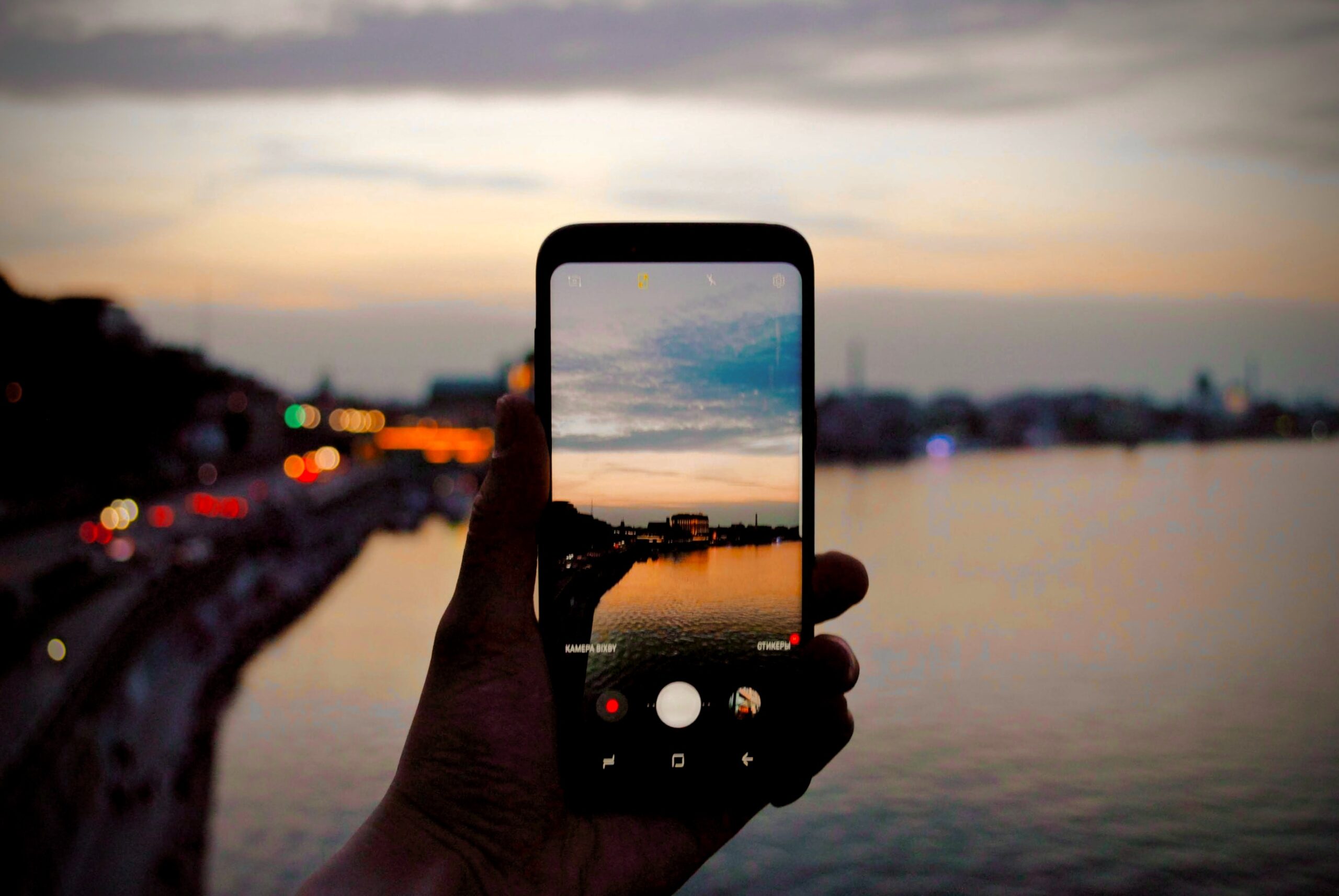
Choosing the Right “Camera App”
One of the crucial elements in mastering mobile filmmaking is selecting the right camera app. While native camera apps provide almost all the basic functionality, third-party apps like Filmic Pro, or Moment Pro Camera offer advanced features and manual controls essential for achieving professional results.
Tips
- Avoid using the native camera app for video recording.
- Explore third-party apps dedicated to mobile filmmaking.
- Consider features, such as manual controls, frame rate adjustments, and focus settings.
Understanding Key Elements for Correct Exposure
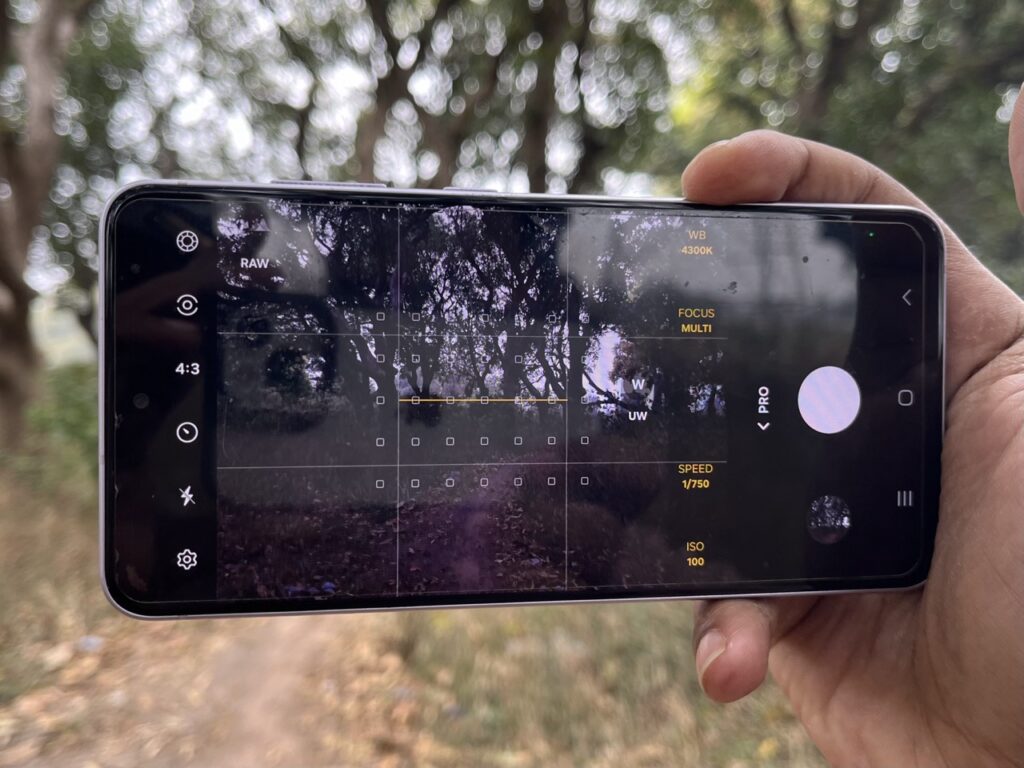
Achieving the correct exposure is fundamental to creating visually appealing videos. Four major elements play a crucial role in this process: frame rate, ISO, shutter speed, and white balance.
Frame Rate
- Understand the industry standard frame rate (24 fps) for cinematic quality.
- Learn how to shoot in slow motion using higher frame rates (e.g., 60-120 fps).
ISO and Shutter Speed
- Grasp the relationship between ISO and exposure, avoiding excessive levels to minimize noise.
- Comprehend shutter speed’s impact on exposure and motion blur, adjusting it according to your desired look.
White Balance
- Recognize the significance of white balance in color accuracy.
- Set custom Kelvin temperatures or use presets based on your shooting environment.
Aperture (Note: Relevant for DSLRs, not smartphones)
Real-World Examples and Exposure Adjustments
Put your knowledge into practice by exploring real-world scenarios and adjusting exposure settings accordingly. Learn how to adapt to different lighting conditions, whether indoors, outdoors, or in low-light situations.
Examples:
- Indoor filming: Adjusting ISO, shutter speed, and white balance.
- Outdoor sunny conditions: Using ND filters to control exposure.
- Low-light situations: Understanding limitations and avoiding noise.
Using Third-Party Gear to Enhance Smartphone Filmmaking
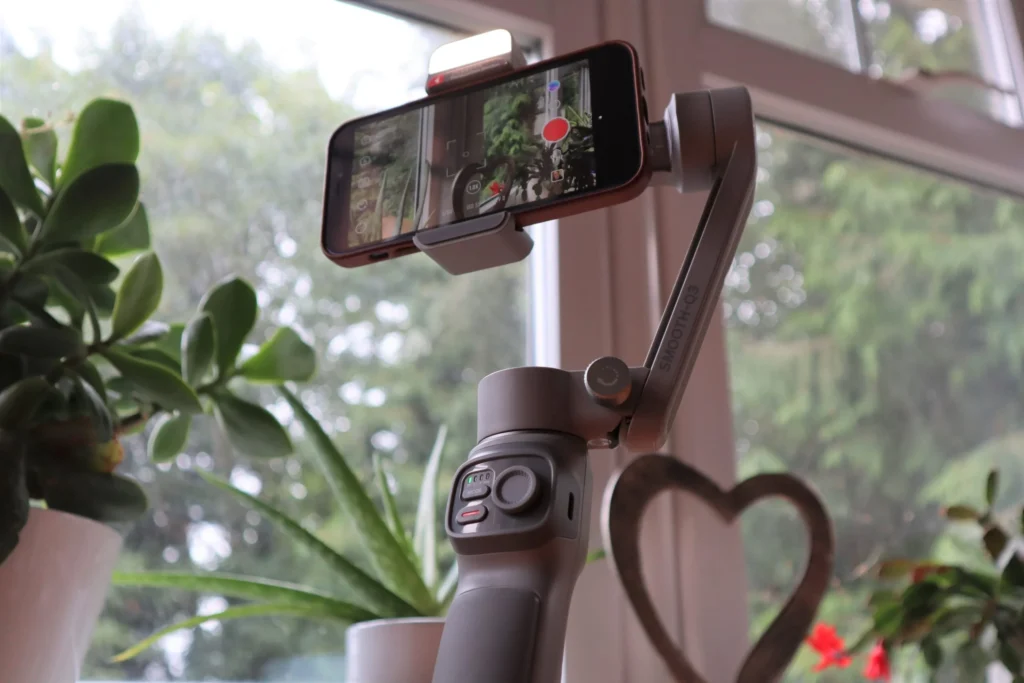
Now that you understand the fundamental settings for achieving the correct exposure with your smartphone, let’s explore how third-party gear can elevate the quality of your filmmaking. While smartphones are capable on their own, certain accessories can significantly enhance your creative possibilities.
One of the most impactful additions is third-party lenses. Companies like Moment offer professional lenses specifically designed for smartphones. These lenses provide various focal lengths, including macro and anamorphic options. By attaching these lenses to your phone’s main camera, you can achieve different perspectives without compromising image quality. Investing in quality lenses opens up new creative avenues and ensures your footage retains a cinematic feel.
Additionally, consider the use of a gimbal for stable footage. Holding a smartphone by hand often results in shaky footage, instantly revealing the amateur nature of the video. Gimbals, like the DJI Osmo, stabilize your phone, eliminating unwanted jitters and enhancing the overall professionalism of your footage. Whether you choose an expensive model or an affordable option, using a gimbal can significantly improve the visual appeal of your smartphone videos.
Advanced Settings and Techniques to Enhance Smartphone Filmmaking
To further enhance your smartphone filmmaking, delve into the advanced settings and techniques within your camera app. Begin by adjusting the shooting quality to 4K and maximizing the bitrate to achieve the highest possible video quality. Turning off the internal stabilizer is crucial, especially when using an external stabilizing device like a gimbal, as it prevents conflicts and ensures smoother footage.
Consider shooting in a flat picture profile rather than the standard or log options. A flat profile offers a balance between contrast and detail, providing more flexibility in post-production color grading without sacrificing information. This approach allows you to have greater control over the final look of your video during the editing process.
Maximizing Smartphone’s Footage: Knowing Your Phone’s Limitations
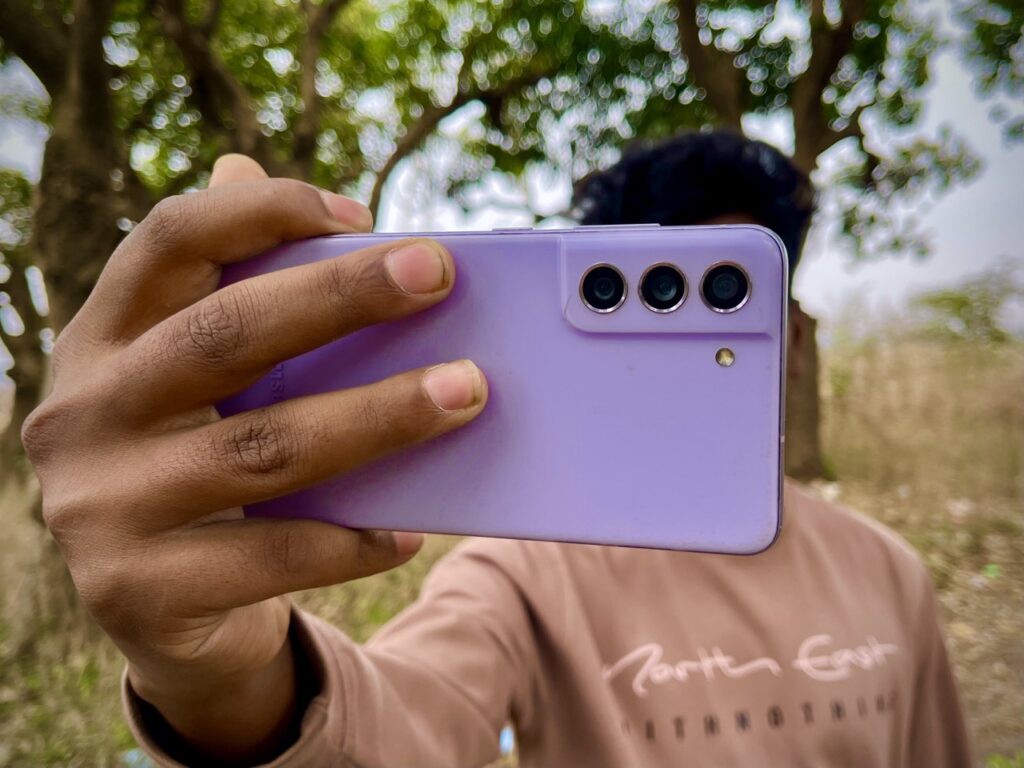
To truly master smartphone filmmaking, it’s essential to recognize and work within the limitations of your device. Smartphones, while versatile, have constraints that can impact the quality of your footage. By understanding these limitations, you can make informed decisions about when and how to use your smartphone for filming.
One key limitation is low-light performance. Smartphones generally struggle in low-light conditions, resulting in noisy and grainy footage. As a filmmaker, it’s crucial to avoid shooting in low-light situations whenever possible. Stick to well-lit environments to achieve the best results and maintain the overall quality of your footage.
Another limitation is dynamic range. Unlike high-end cameras, smartphones may struggle with capturing details in both shadowed and brightly lit areas simultaneously. To overcome this, avoid scenarios with extreme contrasts, such as shooting directly into bright windows or under harsh sunlight. Careful scene selection can help you sidestep these challenges and create visually appealing content.
Understanding your smartphone’s limitations also involves steering clear of blown-out highlights. Smartphones may struggle to retain details in overexposed areas, leading to unprofessional-looking footage. Be mindful of scenes with intense contrast, and adjust your shooting angles or use external tools like reflectors to control the light.
Practical Tips
To elevate your smartphone filmmaking, implement practical tips that enhance the cinematic quality of your shots. Here are some additional recommendations:
- Composition: Apply traditional filmmaking principles to your smartphone shots. Consider the rule of thirds, framing, and leading lines to create visually compelling compositions.
- Creative Apps: Explore third-party camera apps that offer advanced features beyond your phone’s native app. Apps like Filmic Pro provide more control over settings, allowing you to fine-tune your shots.
- Color Correction: While shooting in a flat picture profile, embrace color correction in post-production. Enhance your footage by adjusting color balance, contrast, and saturation to achieve a polished look.
- Experiment with Angles: Get creative with different camera angles to add depth and interest to your shots. Experiment with low angles, high angles, and unconventional perspectives to find unique and engaging visuals.
- Storyboarding: Plan your shots in advance with storyboarding. This technique helps you visualize the sequence of shots, ensuring a cohesive and well-paced narrative.
- Use Slow Motion Purposefully: If your smartphone supports high frame rates for slow-motion recording, use this feature thoughtfully. Slow-motion shots can add emphasis to specific moments and contribute to a cinematic feel.
Sound Quality Matters: Enhancement
While video quality is essential, neglecting audio can significantly impact the overall viewer experience. Smartphones, equipped with built-in microphones, often fall short in capturing high-quality audio. To overcome this limitation, consider the following tips to enhance sound quality in your smartphone filmmaking endeavors:
- External Microphones: Invest in external microphones compatible with your smartphone. These accessories can significantly improve audio clarity and reduce background noise. Options range from lavalier microphones for interviews to shotgun microphones for capturing directional audio.
- Windshields: When filming outdoors, wind can create unwanted noise on your audio track. Attach a windshield or windjammer to your external microphone to minimize wind interference and ensure clean, professional-sounding audio.
- Recording Environments: Be mindful of your shooting location. Choose quiet environments whenever possible to minimize background noise. If shooting in noisy locations is unavoidable, consider reshooting or use post-production tools to reduce unwanted sounds.
- Manual Audio Control: Explore your smartphone’s settings or third-party apps that allow for manual control over audio settings. Adjusting microphone sensitivity and levels can help you fine-tune your audio recording for optimal results.
- ADR (Automatic Dialogue Replacement): In cases where on-set audio quality is compromised, consider re-recording dialogue in a controlled environment during post-production. ADR can be a valuable tool for ensuring clear and crisp audio, especially for crucial dialogue scenes.
Post-Production: Editing Your Smartphone Footage
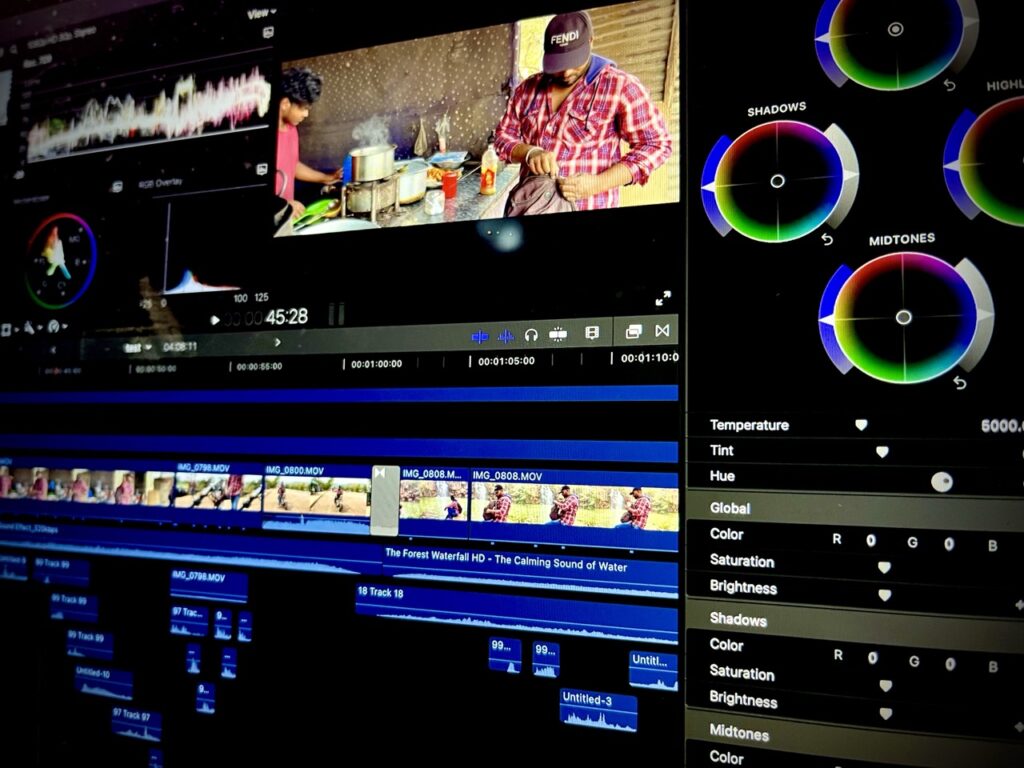
The final step in crafting professional smartphone films is the post-production process. Editing plays a crucial role in transforming raw footage into a polished and engaging film. Here are key considerations for editing your smartphone footage:
- Use Professional Editing Apps: Explore professional video editing apps available for smartphones. Apps like Adobe Premiere Rush, Kinemaster, or iMovie offer advanced editing features, transitions, and color grading options to enhance your footage.
- Color Grading: Fine-tune the color of your footage to achieve a consistent and visually appealing look. Experiment with color grading tools to enhance the mood and tone of your film, providing a cinematic touch to your final product.
- Smooth Transitions: Pay attention to the pacing of your edits and use smooth transitions between shots. Avoid overly flashy transitions that can distract from your storytelling. Aim for a seamless flow that guides the viewer through your narrative.
- Add Music and Sound Effects: Integrate music and sound effects to enhance the emotional impact of your film. Ensure that the audio complements the visuals and contributes to the overall atmosphere you want to convey.
- Export in High Quality: When exporting your final film, choose high-quality settings to preserve the clarity of your footage. This step is crucial for delivering a professional-looking product that can be shared across various platforms.
Smartphone Filmmaking Communities and Resources
To further develop your skills and stay updated on the latest trends in smartphone filmmaking, consider joining online communities and exploring valuable resources. There are numerous forums, social media groups, and websites dedicated to mobile filmmaking where you can connect with fellow filmmakers, share experiences, and learn from each other.
- Social Media Groups: Platforms like Facebook, Reddit, and Instagram host communities of smartphone filmmakers. Joining these groups provides a platform to ask questions, share your work, and gain insights from experienced filmmakers.
- YouTube Tutorials: YouTube is a treasure trove of tutorials on smartphone filmmaking. Renowned filmmakers and content creators often share their tips, tricks, and techniques. Subscribe to channels focused on mobile filmmaking to receive regular updates and inspiration.
- Mobile Film Festivals: Explore mobile film festivals that showcase and celebrate films shot entirely on smartphones. Participating in or attending these festivals can provide exposure, feedback, and inspiration for your own projects.
- Online Courses: Enroll in online courses dedicated to smartphone filmmaking. Many platforms offer comprehensive courses covering various aspects of the filmmaking process, from shooting techniques to post-production.
FAQs
Can I create professional-looking videos with just my smartphone?
Yes, you can! Smartphone filmmaking has come a long way, and with the right techniques and tools, you can produce high-quality and cinematic videos directly from your smartphone.
Do I need expensive accessories to enhance my smartphone filmmaking?
While accessories like lenses and gimbals can enhance your filmmaking experience, they’re not mandatory. You can start by mastering the basics, and as you progress, consider adding accessories to elevate the quality of your videos.
How can I improve the audio quality in smartphone filmmaking?
Audio is crucial in filmmaking. Invest in an external microphone compatible with your smartphone for better sound quality. Additionally, try filming in quiet environments and use post-production tools for audio enhancement.
Are there specific apps for smartphone filmmaking?
Yes, several apps are tailored for mobile filmmaking. Filmic Pro, Moment Pro Camera, and DJI Mimo are popular choices. These apps offer manual controls, allowing you to customize settings for better control over your footage.
Can I edit my smartphone videos on a computer?
Absolutely! Most smartphones allow you to transfer your footage to a computer for advanced editing. You can use professional video editing software like Adobe Premiere Pro, Apple Final Cut Pro, or even free options like Blackmagic DaVinci Resolve to enhance your videos further.
Conclusion – 10 Mobile Videography Tips For Beginners
In conclusion, smartphone filmmaking has democratized the world of video production, empowering storytellers with a powerful tool that fits in their pockets. From understanding the basics of composition and lighting to mastering advanced techniques such as cinematic lenses, manual controls, and experimental editing, the potential for creating compelling films on smartphones is vast.
As you embark on your smartphone filmmaking journey, remember that creativity knows no bounds. Use your smartphone not just as a recording device but as a versatile instrument for expressing your unique vision. Embrace challenges, learn from every project, and continuously refine your skills.
Whether you’re a beginner exploring the basics or an advanced filmmaker pushing the boundaries, the world of smartphone filmmaking invites you to tell stories in innovative ways. Share your creations, connect with a global community of mobile filmmakers, and stay inspired by the limitless possibilities that this accessible and powerful tool brings to the world of filmmaking.
So, grab your smartphone, unleash your creativity, and let the world see your stories through the lens of innovation and imagination. Happy filming!



